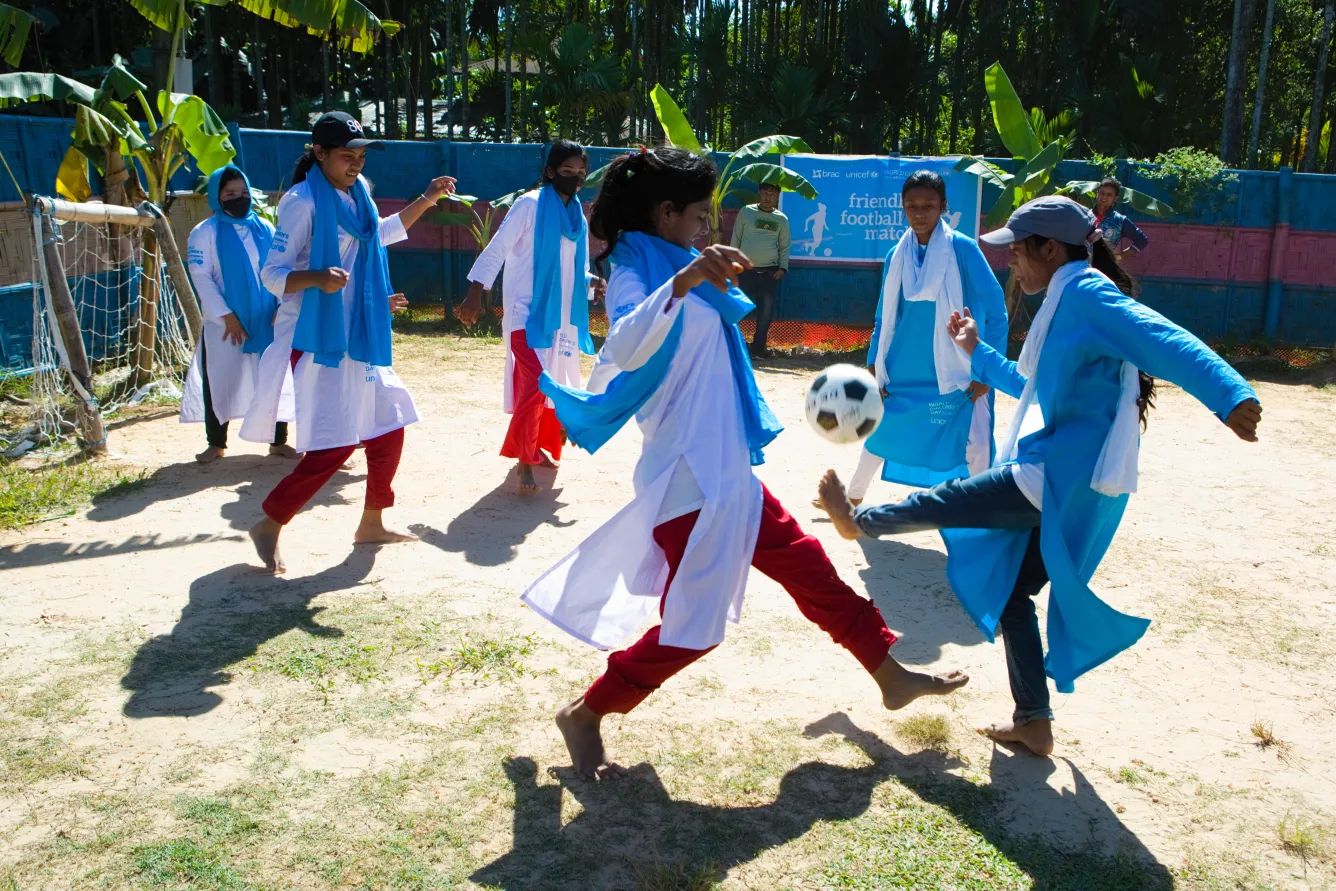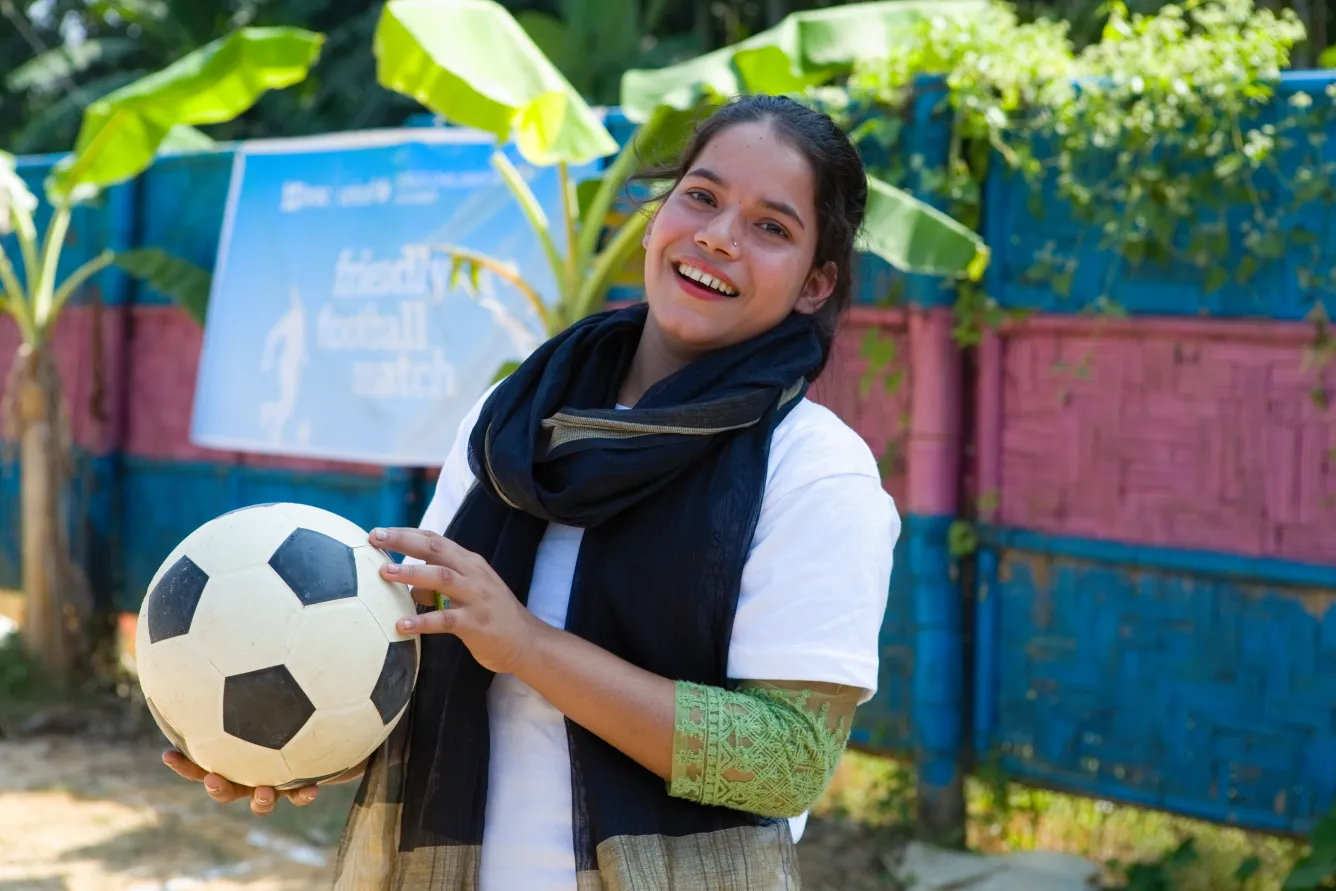A win for friendship: Kicking out tension in Cox’s Bazar
Rohingya refugee girls and Bangladeshi girls bond over a game of football
In the scorching heat of Cox’s Bazar, Bangladesh, barefoot Ruma skillfully darts across the field that serves as a football pitch. It is half the size of an actual football ground and so are the goalposts. None of the girls seem to care about the heat, their bare feet or the size of the pitch. They are having a great time.
Ruma effortlessly scores a goal. There is a wild cheer from her team and a protest from the other team. “It’s offside,” says Shamsuna the de facto captain of the opposing team. The goal is disallowed, and the game continues. But Ruma is unbothered. “I will score another one,” she smiles and walks away.
And true to her word, at the final whistle she has scored three goals against the competitor’s two and her team carries the day. She and her team are the winners of the friendly football tournament.

A weekly treat for Ruma
Football and the days spent at the social hub where they play are Ruma’s best days of the week. This is also true for the other Rohingya girls who go to the social hubs at least three days a week.
“I like it here because we get to make friends from a different community. We learn about so many important things like early marriage and how to live well with others. Most importantly I also get to play football,” she says.
Fifteen-year-old Ruma is a Rohingya refugee who has been living in the refugee camps of Cox’s Bazar for more than five years. Fleeing persecution, Ruma and her family made the harrowing journey to safety with hundreds of thousands of other refugees. They joined around 300,000 people already in Bangladesh from previous waves of displacement. Now almost 1 million refugees, half of them children, live in the world’s largest refugee settlement.
“As a girl, I cannot play football with my brothers at home, but I always watch them play so I can learn some tricks for when I play with my friends at the social hub.”
And this has made her the best footballer at the UNICEF-supported social hub in the vast Kutupalong refugee camp.

Appreciating how the other side lives
The hubs are located at the perimeter of the camps and cater for both Rohingya refugees and Bangladeshi adolescents from the surrounding community. They were created to inspire friendship and understanding between the two communities.
Although not yet best friends, Ruma always looks forward to playing football and to catching up with Shamsun, the other great footballer from the Bangladeshi community. These moments are rare and treasured. Rohingya refugees and Bangladeshi girls playing football with each other and not against each other. Tensions are normally high between the two communities The social hubs are the only place where children from the two communities interact.
“The most important thing I have learnt is how to live peacefully with others, regardless of their status,” says 17-year-old Shamsuna.
At the social hub, Shamsuna also enjoys the storytelling session, where they learn about each other’s life experiences.
“This place is great. It teaches us how to stay together and be friends with each other,” she explains.
In 2022, over 42,000 adolescents and youth from both Rohingya and host communities have found a place to co-exist in six social hubs in Cox’s Bazar.
